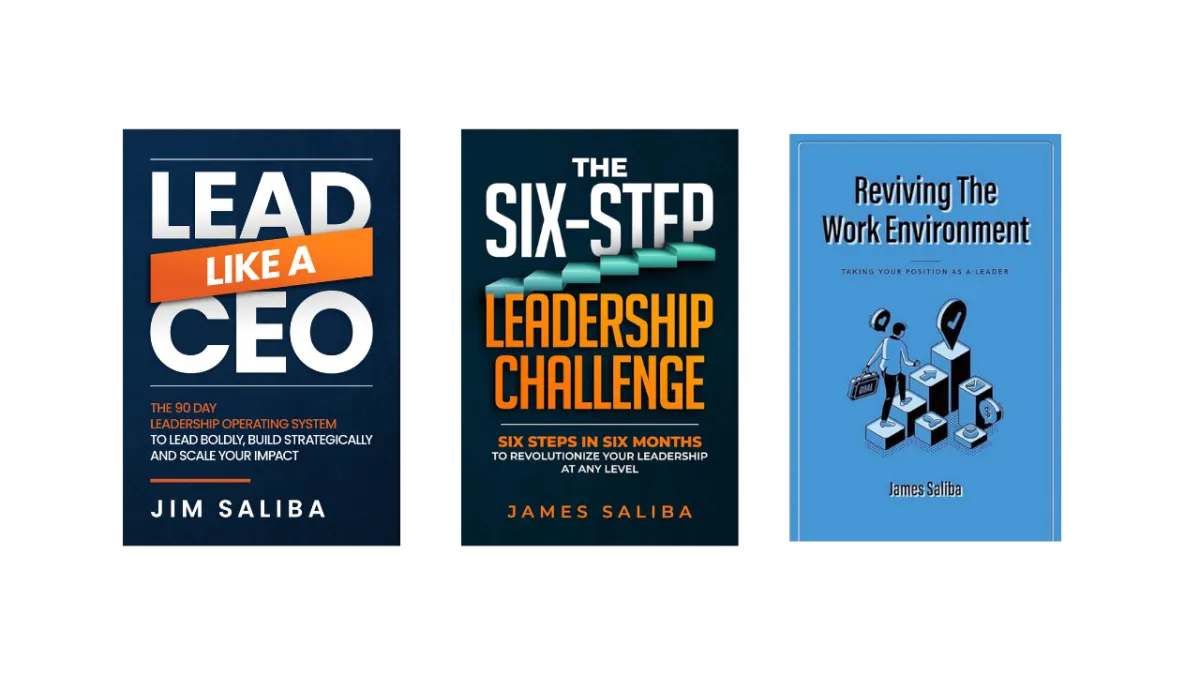Insights for Real-World Leadership
Straight talk and proven strategies for leaders who are done babysitting and ready to lead at the next level.

Boost Relationships and Growth: A Leader's Guide to Effective 1-on-1 Meetings.
As a leader who manages people, effective 1-on-1 meetings with your employees are essential for building strong relationships, identifying challenges, and providing feedback. However, it can be challenging to know how to conduct these meetings in a productive and beneficial way for both you and your employees. In this response, I will provide some tips on having better 1-on-1 meetings with your employees, so you can build stronger relationships, improve communication, and help your employees grow and develop.
Are my meetings effective?
It's essential to evaluate whether your 1-on-1 meetings are effective or not regularly. Here are some signs that your 1-on-1s may not be working:
Your employees are consistently unprepared or disengaged during the meeting and don't seem to be taking the opportunity to share their thoughts or concerns.
The meetings feel forced or awkward, and there isn't much dialogue or exchange of ideas.
There is a lack of follow-up or accountability after the meetings, and action items are not being completed or discussed in future sessions.
Your employees are not showing any improvement or growth, despite the feedback and guidance you provide during the meetings.
You consistently run out of time during the meetings and cannot cover all the topics you planned to discuss.
If you are experiencing any of these signs, assessing why your 1-on-1 meetings may not work and making changes accordingly is essential. This could involve adjusting the frequency or structure of the sessions, soliciting employee feedback, or setting clear and measurable meeting goals. Feel free to experiment and try new approaches until you find a format that works well for you and your team.
What can I do?
Effective 1-on-1 meetings with your employees are crucial for building strong relationships, identifying challenges, and providing feedback. Here are some tips to help you have better 1-on-1 meetings with your employees:
Set a regular schedule: Set up a regular meeting schedule with your employees, and make sure to stick to it as much as possible. This consistency will help build trust and make your employees feel valued.
Prepare an agenda: Before each meeting, prepare an agenda that outlines the topics you want to discuss. This will help you stay focused and ensure that you cover everything you need to.
Listen actively: When you are meeting with your employee, make sure you are actively listening to what they have to say. Don't interrupt, and give them your full attention.
Ask open-ended questions: Asking open-ended questions can help facilitate a more productive conversation. For example, instead of asking, "Are you having any problems?" ask, "What challenges have you been facing lately?".
Provide feedback: Use your 1-on-1 meetings as an opportunity to provide feedback to your employees. Be specific, and focus on both positive feedback and areas for improvement.
Follow up: After each meeting, follow up with your employee to ensure that they are making progress on any action items that were discussed. This will help ensure that the meeting was productive and that the employee feels supported.
Remember, the goal of a 1-on-1 meeting is to build a strong relationship with your employee, identify any challenges they are facing, and provide feedback to help them grow and develop. By following these tips, you can have more effective 1-on-1 meetings and build stronger relationships with your employees.
In conclusion, effective 1-on-1 meetings with your employees is an important part of being a successful Leader. You can create a productive and beneficial meeting environment by setting a regular schedule, preparing an agenda, active listening, asking open-ended questions, providing feedback, and following up. Incorporating these tips into your 1-on-1 sessions can create a positive and successful work environment for you and your team.
Leaders Who’ve Made the Shift
Michael R., Senior VP

“Jim did more in two sessions than my last coach did in six months.”
(Translation: Jim doesn’t waste your time.)
Karen H., Senior VP

“Jim made it easy to focus on the real leadership challenges.”
(Translation: No fluffy theories. Just real talk and results.)
Ashly N., Director

“Within 15 minutes, I knew I’d made the right decision.”
(Translation: You’ll know fast if Jim’s your coach.)
Stop Acting Like the Chief Fire Extinguisher.
Start Leading.
You know the endless approvals, babysitting, and check-ins aren't real leadership. Let's fix that.
© 2026 James Saliba Inc. • All Rights Reserved • Helping Tech Leaders Lead Strategically Without Firefighting • Terms & Conditions


